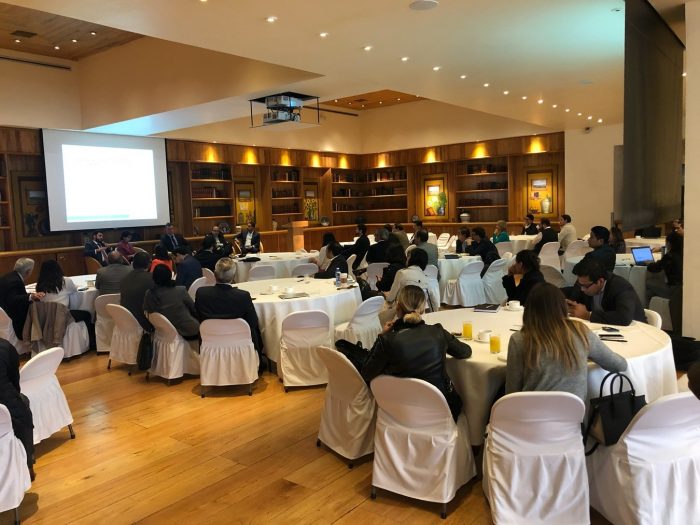Distributed Generation is an adequate mechanism to impulse cost reduction in companies and organizations while avoiding emitting greenhouse gases into the environment. It is an important strategy to mitigate the economic impacts of COVID-19, and one of the main challenges is to find financing mechanisms that can accelerate the execution of these projects in the country. For this reason, LAB Mexico promoted the development of a workshop for the financing of Distributed Generation (DG) on November 13, 2019.
Currently, the photovoltaic DG has an installed capacity in Mexico of almost 1,000MWp, representing 1% of the capacity of the national electricity system, while the available capacity of the General Distribution Network is 27,000MWp. The DG will play a fundamental role in fulfilling energy transition goals by 2035.
There is a great opportunity to support companies – especially small and medium-sized enterprises – with renewable energy strategies that reduce their energy costs, permitting the recovery of their post-COVID-19 economies.
The conclusions, based on the analysis of the discussions carried out among participants during the workshop, will serve as a guide for establishing the monitoring and intervention plan (roadmap) with key stakeholders in the industry.

The DG sector is not robust enough to finance this transformation alone. Commercial banking in Mexico is a solid sector with reserves, capacities and scope that can facilitate this transition.
However, both industries are required to work together on the following aspects:
- The promotion of the benefits of photovoltaic DG must be strengthened in the SME sector to increase financing demands for this type of project. This promotion should be a joint effort between relevant business associations, development finance institutions, and local and federal governments.
- Revolving credit lines must be implemented for companies integrating DG in order to facilitate DG growth and consolidation.
- Other financing instruments, such as leasing and energy purchase contracts, must be promoted as alternatives to conventional credit, both in supply and demand.
- A certain and stable regulatory environment must be promoted to facilitate the investment of risk capital with different business models and financing, and with the capacity to replicate and scale. This is the work of the photovoltaic industry, alongside development and commercial financial institutions, as well as local governments.
- Information that allows financial institutions to better assess risks and generate products according to the risk profile of the projects must be generated on the market and performance of DG projects.
- Financial institutions require a greater technical understanding of the value propositions of PV systems, their operational risks and shelf life.
- Various financial intermediation schemes should be explored with the support of “asset managers” that facilitate project evaluation, risk determination, dispersion of financing and collection responsibility.
As a product of this IDB workshop, ABM and GIZ, together with NAFIN, encouraged the hiring of a consultant to provide material for this roadmap, which will be delivered at the end of June and will be disseminated through the IDB, ABM, GIZ and IKI.
The workshop materials can be found here.
